He might as well join the Golf Nut Society, he’s now a certified golf nut.
The Head Nut
#0001
He might as well join the Golf Nut Society, he’s now a certified golf nut.
The Head Nut
#0001

Guy Yocom, Golf Digest
Jack Burke Jr.’s voice, once commanding and direct, is softer these days. His answers to questions are less thunderous, his opinions have less of a hard edge, and his tough-love parables on golf and life are gentler. For this icon of American golf, there’s a reason for the slight transformation. On Sunday, Jan. 29, Burke will celebrate his 100th birthday. The oldest living Masters and PGA Championship winner has arrived at a place we would all like to be—at peace and satisfied.
His birthday will come with all the trimmings. A party is on tap at Champions Golf Club, the famed Houston club he and Jimmy Demaret founded in 1957. Coffee, cake and ice cream will be served at noon, accompanied by laughter, storytelling and good-natured Texas kidding. At Champions, there’s no such thing as a stranger. One of Burke’s friends told him that 100 candles on a cake is so many, he may need to start blowing them out on Saturday.
Events this momentous draw lots of friends. An impressive number of Burke’s pals from out of town are coming in. Butch Harmon, the renowned teacher who at age 6 was taught how to get the ball airborne by Burke, will be on hand. So will Jim McLean, another star teacher who since his college days at Houston has visited Burke at least once a year for counsel, conversation and encouragement. Ben Crenshaw, who credits Burke as an influence along with Harvey Penick, is driving over from Austin. Jim Crane, the owner of the Houston Astros and a longtime friend of the family, will bring the World Series trophy to display for Champions’ members, hundreds of whom will attend.
This may be a good time to offer a primer on Burke, as two full generations of golfers might not fully know what he has brought to the game. He retired as a player almost 60 years ago, and newcomers especially know him only vaguely. Although Burke won most of golf’s important titles and has received the most prestigious honors the game has to offer—the USGA’s Bob Jones Award is chief among them—these days he’s hidden in plain sight. Burke is a vital part of golf history, a singular individual who distinguished himself as a player, teacher, club owner, author, influencer and preserver of the best things in golf.
Burke was one of the top players of the 1950s. He won 16 times on the PGA Tour in the era of Ben Hogan, Sam Snead, Cary Middlecoff and Lloyd Mangrum. In 1950, Burke’s second year playing full time, he won four events, and in 1952, he won four tournaments in successive weeks, a tour record that still stands. His best year probably was 1956, when he won the Masters by coming from eight strokes back in the final round to defeat Ken Venturi. Three months later he won the PGA Championship the last time it was conducted as match play. He won seven matches and defeated Ted Kroll, 3 and 2, in the 36-hole final. Not known as a superlative ball-striker, Burke compensated with shrewd course management, patience, experience, nerve under pressure and one of the best putting strokes of all time.
Burke also was an outstanding Ryder Cup player and team leader. He played on five consecutive U.S. teams from 1951 through 1959, and in 1957 was a playing captain. His record was 7-1. He captained again in 1973 and in 2004, was an assistant captain to Hal Sutton. Sutton, like Phil Mickelson, was a Burke acolyte, as were Steve Elkington, Crenshaw and many other tour players who made the pilgrimage to see Jack when they came to Houston.
His playing career consumed slightly more than a tenth of Burke’s life, and his achievements were the primary basis for him being inducted into the World Golf Hall of Fame in 2000. However, Burke lived a remarkable life before arriving on the PGA Tour. Born in Fort Worth in 1923, he was the eldest child of Jack Burke Sr., who finished second to the immortal Ted Ray in the 1920 U.S. Open. Burke Sr. was one of the first club pros in Texas and was a clubmaker, teacher and innovator. He invented, among other things, the original cord grip for golf clubs. The Burke household near River Oaks Country Club was a gathering spot for great players of the day, and young Jackie soaked up the conversation. There’s a ton of Burke minutiae, but an interesting bit is that one of his babysitters was Jimmy Demaret, who went on to win the Masters three times. Ben Hogan, Byron Nelson, Craig Wood, Babe Zaharias and many others were like so many aunts and uncles to Jack Jr. In school Burke was a good student and briefly attended Rice University, but at age 19 he left to accept a club-pro position in Galveston. After a hurricane swept the clubhouse away, and with America’s entry into World War II, Burke decided to join the Marines.
“My dad’s life was shaped by three things,” says Mike Burke, Jack’s son, who last year purchased Champions from Jackie and his wife, Robin. “First there is his father, whom he idolized. There was and still is, his family. Then there was the Marine Corps.”
Burke was in the Marines for four years and taught physical fitness and self-defense to Marines preparing for combat in the Pacific, including the horrific Battle of Tarawa. Even today, Burke’s instruction on how to defend against an attacker—it involves a buck knife, honed sharply—is something to hear. The values, discipline and toughness he learned in the Marines, coincided closely with his obedient Catholic upbringing. Upon his discharge in 1946, Burke briefly tried playing for a living, but was drawn instead to a series of excellent club jobs. Through 1941 U.S. Open champ Craig Wood, he landed a club job in Deal, N.J. He then served as an assistant to 1948 Masters champion Claude Harmon at Winged Foot in New York and later took a head pro job at nearby Metropolis Country Club.
An outstanding playing career followed, but with four children at home, Burke aimed to spend his time in Houston. In 1957, he and Demaret founded Champions, which quickly rose to national prominence. Bob Hope, Bing Crosby and many other celebrities hung their hats at Champions, and Burke knew them all. After Demaret died in 1983, Burke pointed out that the two men never signed a contract. “With Jimmy and I, our word was our bond,” he said. Champions over the years hosted the 1967 Ryder Cup, 1969 U.S. Open, 1993 U.S. Amateur, 1998 and 2017 U.S. Women’s Mid-Amateur, 2020 U.S. Women’s Open and four playings of the PGA Tour’s Tour Championship from 1997 to 2003. During the 1960s, Champions also hosted the Houston Champions International five times. It’s where Hogan, who counted Burke among his few close friends, struck his last shot in competition, in 1971.
Champions became Burke’s most important endeavor. From there he’s preached the importance of amateur golf, juniors in particular. (The Jack Burke Invitational is a popular stop on AJGA schedule.) Over time he has dispensed all kinds of wisdom and humor, along with sharp reactions to different facets of the game. On the commercialization of golf, including pricey club memberships, big green fees and expensive equipment: “These people are like one-eyed dogs in a meat shop. They’ll never realize that an emphasis on money makes everything worse.” On his policy in the 1990s of requiring prospective members at Champions to possess a handicap of 15 or lower: “We don’t want to run a yacht club where nobody knows how to sail a boat.” On the emergence of sports psychologists: “I don’t get it. In my day, our sports psychologist was named Jack Daniels.” On teaching systems: “I’ve never known of one that worked. Golf can’t be overpowered.” On the slew of improprieties that occurred in politics and financial sectors: “Not many of these people play golf. If they did, they’d know where the out-of-bounds stakes are.”
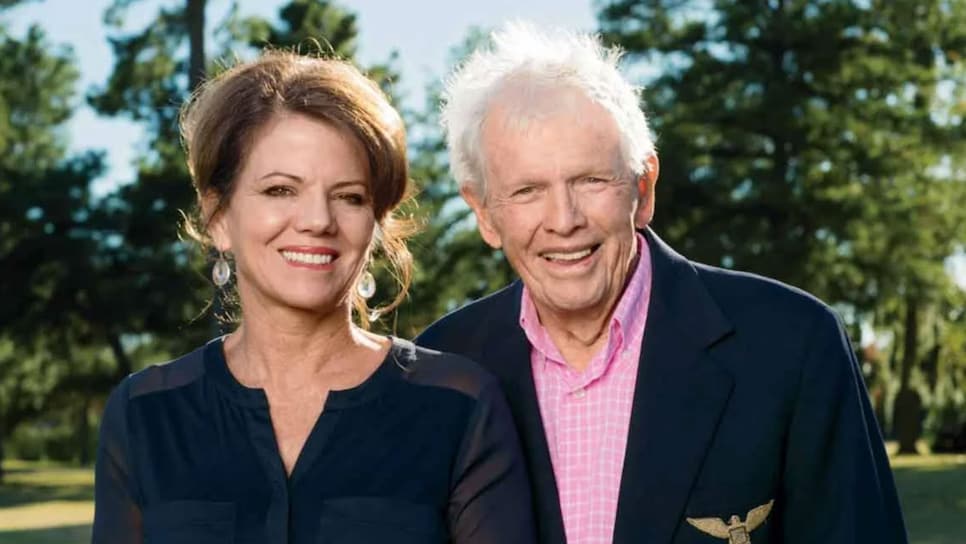
Jack Burke Jr. with wife Robin, captain of the 2016 Curtis Cup, in 2020.
Instructional thoughts and takes on the nature of competition flowed from Burke, too. On a key swing fundamental: “The primitive hunter who threw his spear at the saber-tooth tiger finished with his weight on his left foot. If he didn’t, he got eaten. A good golfer, like that hunter, shifts his weight to the left.” On fans at major championships: “Many will be rooting for the players, but others are bloodthirsty and want to see how they handle the struggle. They want to see whether they pass out on the first tee.”
He gave life advice, too. On retirement: “Leisure time is dangerous. You might wind up inside a bottle of bourbon. You were put on this earth to produce, so get with it.” On managing finances: “A priest and teacher I had in school, Father Allnoch wrote on the blackboard, ’50-51.’ He said if you make $50, don’t spend $51. It’s that simple.” One of Burke’s best is repeated often by Steve Elkington, a PGA Championship winner himself and Burke disciple. Elkington says Burke values personal relationships above all else and notes that on Burke’s refrigerator are the words, “If you can put a match to it, it’s not worth a damn.”
With Jackie, the whole has always been greater than the sum of the parts. It’s Burke who Tiger Woods credits with inspiring his famous “stinger” at the 1993 U.S. Amateur. In 1999, he turned Mickelson’s putting around, setting the stage for big titles. In 1969, he was instrumental in bringing the U.S. Open south of the Mason-Dixon line for the first time. When the crisis over racial discrimination at private clubs occurred in 1990, national TV networks sought out Burke for perspective. He quietly commanded attention from several generations of players, administrators, course architects and club owners, but Burke preferred to stay a half-step away from the limelight. He has always said that the word, “pro” was the root word not for “professional,” but “promotion.” Yet he never was particularly interested in promoting himself.
Age has always been just a number to Burke. In 1987, well after his first wife had passed away, he married the former Robin Moran, a freshman walk-on at Texas who had ventured over to Champions for a putting lesson. Burke was 64, Robin was 24. Robin went on to be the runner-up in the 1997 U.S. Women’s Amateur and captain of the 2016 Curtis Cup team. Jack had five children already, but he and Robin had a daughter, Meghan, now 32. Now that’s living.
After the birthday party concludes, Burke will get back to business. Six days a week, he’ll rise early, eat a small bowl of cereal, attend church and then head over to Champions. He’ll greet members and their guests, write a few notes and talk on the phone a bit. If he’s feeling especially good, he’ll visits the double-ended practice range and big putting green, where he’ll offer a few quick lessons but mostly encouragement. “His eyes aren’t great anymore but he can tell a lot without seeing the ball,” Robin says. The day is not heavy lifting, and Robin has him home by early afternoon. “In summers I’m asleep before dark,” he says.
Years ago, Burke likened the average person’s life journey to climbing a tree, with the focus on reaching the top. “Sooner or later, though, you have to climb down out of the tree,” he said. “The secret is to not break too many branches on the way down.”
As he reaches the century mark of his remarkable life, Jack Burke Jr. is coming down on angel wings.
Dear Head Nut,
I just joined this distinguished Society and have been assigned #4084. I noticed that you no longer track Nut points. I totaled only 7,077 points on my entrance exam. That may be good for me but when compared to a Nut of the Year with over 100,000 it looks like I left it a tad short! I was going to try to up my total with bonus points for the following examples of nuttiness:
1. Left my wedding band in a golf cart at the Lacayan Beach Country Club while playing on my Honeymoon. Married 5 days and already lost my ring. The newlywed Mrs. Robinson was not amused. Still married 52 years though! 1,005 Points
2. Before my last colonoscopy with an avid golfing doctor, I asked him what type of grip he planned to use on the scope, Vardon or interlocking? He said, “Crosshanded”. Hmmm? Just before he put me under, I told him “No O.B. and no Mulligans”. When I came to, I asked him how it went. He said “Tough hole, doubled it” and left. 100 Points
3. I’m known as “All Day Dave” in two counties here in NJ. for playing 36+ holes 3 times a week. My wife once had to get me at the course, and the counter pro said “What’s his name?” My wife said “I think you call him “All Day Dave” . The pro said we’ll get him from the 4th hole. 512 Points
4. I have an official prescription from a Board Certified doctor to convince my wife that I was OK to play after a brief back issue. It said: “Can play golf, no household chores”. 500 Points
5. While traveling to Singapore on a stopover in Tokyo in 1987, I saw Arnold Palmer in a concourse bar. Arnie was my Father’s favorite golfer (mine as well). I went over to talk to him. He bought me a beer! When it was time to go, I got his autograph on my business card. I gave it to my Dad. He treasured it. When he passed, I got it back and now proudly show it to all my golfing buddies. 2,000 Points
6. During Covid, one of my golfing buddies challenged me to make something out of old scorecards. Attached is a picture of the Augusta National Clubhouse, not to scale but clearly identifiable to serious golfing patrons. 1,000 Points
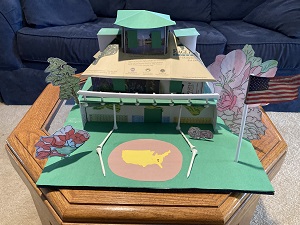
7. I am Co-President of my 55+ community’s Golf Club, with about 80 members. I arranged and ran a “Geezer” Ryder Cup competition against another local 55+ community, After 8 years of 3 day competitions in singles, best balls and scrambles, the competition is basically tied, 4-3-1 with 116 points vs. 113. Bragging rights were always on the line. 1,008 Points
8. I write articles on our Golf Club for the 55+community monthly newspaper. Besides the normal results from our various events, I try to include humor. I’ve pondered how some club members would fare on “The 18 Best Holes in the World”. Like the 12th at Augusta or the 18th at Pebble. (picture an 36 Indexer!) It was not pretty! I’ve found pictures of old clubs and a described how certain members would use them. I’ve published tips for playing in the winter in NJ. When not playing golf, I’m proud to say I like Hallmark movies.
I fashioned a script I want to send to Hallmark for their consideration: Two golfers meet in high school, Arnie and Annika. They plan to go to college on a golf scholarships, then Q School and the Tours. Annika does it, Arnie has to drop out to run the local Muni after his father dies, giving up his dream. Annika goes onto the LPGA and falls for a rather suspicious Australian pro. Arnie marries a local Waffle House waitress with actress ambitions. Annika’s father owns a swanky private Golf Course right next to Arnie’s Muni which he tries to buy to build Condos.
In short, Arnie’s wife leaves him and their son for Hollywood, Arnie and the Australian pro play a match for the Muni’s Deed, and Arnie wins after sinking a 95 foot downhiller with his Father’s original Scottsdale Ping Answer. Arnie and Annika get together in the end. A little Caddy Shack, Missing Links, and Happy Gilmore mixed up with Hallmark schmaltz. 595 Points
I haven’t found The Secret yet, but I’m still trying. This year in mid season I adopted a modified “Gary Player” step through with my new Ping 425 driver. My buddies liken it to Arthur Murray two step, but it’s been working for me. (So far). I call it the “Cha Cha CaChing” from all the $2 Nassau’s I’ve won since switching. Gotta go now, wife’s not home, and I want to hit nerf balls from the sun room, through the kitchen into the dining room. I’m trying the 7 iron today. 425 Points
Dave Robinson (#4084)
Well, #4084, you’re definitely certifiable, that’s for sure! I loved your email so much that I decided to give you some Bonus Points. 7,145 points, to be exact. Nice work!
Regarding your stories, I’m torn between the bar encounter with Arnie and losing your wedding ring in the golf cart during your honeymoon on the fifth day of you marriage. I guess I’ve got to go with the Arnie encounter as it took a lot of chutzpah to walk up to The King and end up having a beer with him. But, losing your wedding ring on your honeymoon and STILL being married is quite a feat! – The Head Nut (#0001)
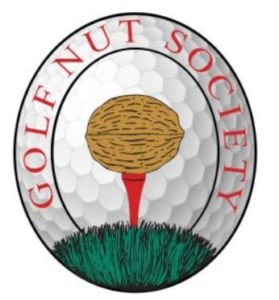
Golf Nuts,
Yours truly casually mentioned to one of my golf buddies, Doug Kyle (#4021), last week while we were were hitting balls on the range that one of the rivets on my golf bag had popped and the fabric had separated from the top of the bag.
“Do you think it’s worth repairing?” I asked.
“Give me the bag overnight, I think I can fix it.” he replied. Here’s the rest of the story…
Step 1
“I tried clamps and other things but they didn’t work but the bungee cords pulling up are doing a great job at holding it in place. Got it sucked up nice and tight against the two edges.” (LMAO – HN)
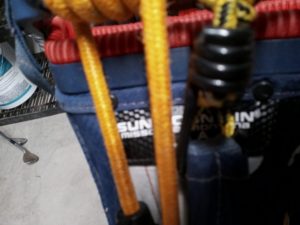
Step 2
“Holes drilled and screws inserted.”
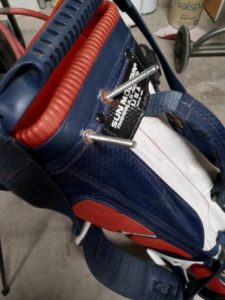
Step 3
“Cut, grind and super glue the screws.”
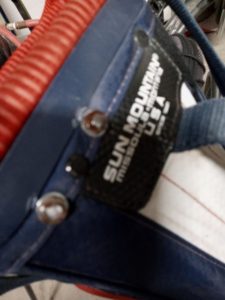
Step 4
“Black fingernail polish as the finishing touch (My wife’s idea).” (They actually drove to the store at 9 PM to buy the polish!! – HN)
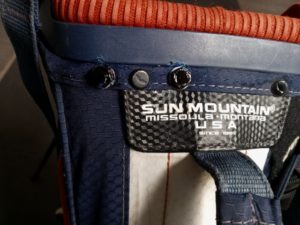
“Voila! Finis!”
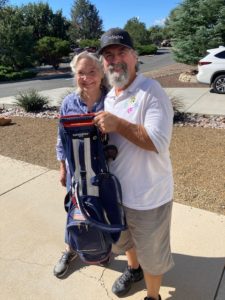
So, I ask you, fellow Nuts, where does one find such friends? On the golf course, that’s where!
The Head Nut
#0001
P.S. The next time my toilet gets stopped up, do you think I should call him? I await your reply. – HN
John Schwarb, Sports Illustrated
The Golf Heritage Society’s annual convention was recently in Indianapolis, with plenty of unique items to be found on trade show day.
INDIANAPOLIS — The trade show floor at the Golf Heritage Society’s annual convention is part collectible sale, part history lesson. Look one way for a table full of hickory clubs, each with a story. Look another way and see a trophy from a century ago.
The GHS, whose mission is to “promote an appreciation for the history and traditions of golf and to foster friendship among its enthusiasts worldwide” brought its annual convention to Indianapolis last week, with seminars, golf outings and a trade show any lover of golf history should check out.
Indianapolis is my home, so I could easily visit. Here are some items that caught my eye.

In 1919, a 17-year-old amateur sensation from Atlanta went to Hamilton, Ontario, for the Canadian Open. Bobby Jones finished in a tie for second with Jim Barnes, 16 shots behind J. Douglas Edgar (interestingly, also from Atlanta).
Of course, Jones won no prize money as an amateur, but he received this silver medal in what would be his only Canadian Open appearance. In 1969, he donated 32 national championship medals to the USGA for public display—but not this one. His daughter kept it for years, now it’s on the open market for $45,000.

A Ping stand bag by itself usually wouldn’t get golf collectors excited, but how about Phil Mickelson’s bag from Arizona State? He won NCAA titles in 1989, 1990 and 1992, though the owner of the bag can’t say for sure when this was used. Photo-matching is a popular technique now for collectors to best authenticate items, so that’s going to be the next job with this piece.
The bag comes with a set of Ping Eye 2s including a 1-iron. Doesn’t that sound like Phil?

Vintage golf balls are plentiful among hardcore golf collectors, but the boxes—even empty ones—can be collectible too with their bright colors and interesting wording. Anyone got an extra Nimble Shilling lying around?

Speaking of golf balls, many presidents and vice presidents played while in office and their officially sealed and individually boxed balls are crossover collectibles for golf and presidential history buffs.

Older money clips belonging to prominent players are attainable without taking out a loan. This display case included a number of PGA Tour and then-Senior PGA Tour member clips as well as clips from major championships and regular tour events.

One rule of golf memorabilia continues to ring true: Anything tied to Arnold Palmer is cool. Like his famously neat signature on a label from a can of Pennzoil, which the fellow Pennsylvanian endorsed for decades.

You’ve heard about the top-dollar items in golf collecting, like the $5 million Tiger Slam irons and a backup putter of his that sold for north of $300,000. And then another backup putter.
At the opposite of the value spectrum are tickets, but don’t sleep on those as the years go by. Why? Because the rise of digital means fewer physical tickets getting into the marketplace, which only helps older tickets.
A ticket like this one from the 2007 PGA Championship might not be very rare yet, but if you’re collecting tickets from Woods major victories, it’s a must-have and at a good price.
A golf nut’s paradise.
The Head Nut
#0001

August 4, 2022
Vin Scully called me on Christmas.
Sure, I had sent him an email interview request hours earlier on Christmas Eve, but it never crossed my mind that he would phone me during the biggest day of the NBA season.
Hearing the sad news that Scully died Tuesday at age 94 made me think back (and dig up our interview transcript) to an occasion that to me said so much about the person he was. Scully may have been synonymous with baseball and the Los Angeles Dodgers, but he broadcast professional golf, too, first for CBS – including the Masters eight times from 1975-1982 – and then with NBC from 1983-1989, where he partnered in the 18th-hole tower with Lee Trevino.
As much as I would have loved to listen to him speak for hours on baseball, it was his time in golf that I was asking him to reminisce about. I had forgotten about this until I did an email search, but the person who shared with me Scully’s contact information (and shall remain nameless) gave it to me on Aug. 13, or more than four months before Christmas. No phone number but an email address – I guess at this point I’m not revealing too much by saying his email started red@ – and a fax number. Who still had a fax? Apparently, Vin did! I never faxed him but now that I think of it, I wish I had just to say I did.
This was some quality procrastination from mid-August to late December, even for me, but sounds about right – have a direct line to the man, the myth, the legend Vin Scully and wait until most of the Catholic world was at a midnight mass service to bother writing him for an interview.

Players and fans stand for a moment of silence for the passing of Vin Scully before the Houston Astros played the Boston Red Sox at Minute Maid Park in Houston on August 3. (Thomas Shea-USA TODAY Sports)
Santa could not have given me a better gift than a call from Vin had jolly Saint Nick landed his sleigh on the roof of my downtown Orlando condo and dumped out a bag of toys. The year was 2013, and while the specifics are a bit vague, I think I had seen a movie earlier that day and was watching the NBA in the late afternoon before dinner with my parents when I answered the phone and heard his unmistakable voice.
I may have procrastinated on writing him, but I had prepped several questions and I scrambled to pull them up on my laptop and fumbled to find my digital recorder. Again, who calls a total stranger on Christmas and sits for a lengthy phone interview? Vin Scully, that’s who!
I’m not going to post the full transcript of the interview, but here are a few things he said about Trevino, a partner he considered a true friend, that stuck out:
“Most people think of Lee Trevino they think of a talkative, outgoing, happy-go-lucky type of guy. He’s like so many people, he’s misunderstood,” Scully said. “He’s an intelligent, sensitive human being. Very bright. We’d sit on the tower and talk about the world events. He had a delightful laugh that everybody loved, but he’s far more than that delightful jokester.
“I marveled at a few things about him. Lee told me one time that he never had a cavity. As someone who has what I call Irish teeth, he had beautiful teeth,” Scully continued. “His eyesight was remarkable. I don’t know what it would be if he read the charts but we would in the tower on a par 5, so it’s a long hole, and then we would be 20 yards away from the green, and he would watch somebody hit off the tee and he’d say he blocked the shot. He had the eyesight of Chuck Yeager. It was incredible.”
“Once in a while I had the pleasure of playing with him,” he told me. “I never asked him anything. At my best, I was a 12 handicap. I’m left-handed. So occasionally we’d be on the range and we’d be facing each other and I’d just marvel at him. He might say something like, ‘Vinny, you’re choking the club to death. Relax.’ Then I’d start hitting a few balls very well and he’d say, ‘OK, let’s go.’ We’d walk 100 yards to the tee and I’d go right back to being what I am, which is hopeless. It was a great privilege to watch him shape shots. Remarkable.”
I asked him to describe how Trevino prepped for a broadcast, and his response was telling about how he went about doing his job and what made him so great. “Technically, in any sport, I always assumed I was the reporter answering the question who, what, where and when but the how – that key word – that belonged to the analyst. I would talk about score, where they are today, the shot, the club, the distance and then get out of the way to allow Lee to give the analysis. I would sit at his feet almost like a child and listen to his explanation of why these things occurred.”
I could go on but this final anecdote he shared is arguably my favorite, because it combined golf and baseball and two athletes that captured the attention of the sporting public.
“There was a wonderful golf writer in England named Bernard Darwin,” Scully began. “He talked about a player that was out of sight in a tournament and then won. He referred to the fact that the golfer had come from the back of beyond. I thought that was such a remarkable phrasing. I used it with Fernando Valenzuela, the Mexican left-hander, who really came from the back of beyond to become more than a hero. I felt that Lee was the same. He came from the back of beyond. He came from hitting golf balls with branches in the cemetery.”
At this point we had talked for 25 minutes and I had exhausted my questions and he had told one gem of a story after another. However, I didn’t really want to hang up. I had the great Vin on the line and I didn’t want this moment to end. I had a pretty good idea that this was going to be a one-and-done for me. But before I could start vamping, he said, “I hope that helps a little bit, Adam. I’ve got family here and I did want to do it before I got overwhelmed.”
I suddenly felt like the worst person in the world. It’s Christmas Day, Vin’s family is over and I’m keeping him from having a glass of eggnog with his wife and kids to do the most-non-deadline of non-deadline interviews you can imagine.
I wished him happy holidays, and that was the extent of my dealings with him, but it left a lasting impression that someone as famous as he would drop everything – even on Christmas Day – to do an interview for a sport he hadn’t covered in over 20 years.
To me, it spoke to Scully’s character and was just a small reason he was such a beloved figure in sports. I loved listening to him call a game before, but after our Christmas Day interview he had secured a permanent space in the upper tier of my sports broadcasting firmament. Vin Scully was pure class in my book, and I can’t help but think of him every year on Christmas Day.
We need more Vin Scully’s and fewer Greg Normans.
The Head Nut
#0001
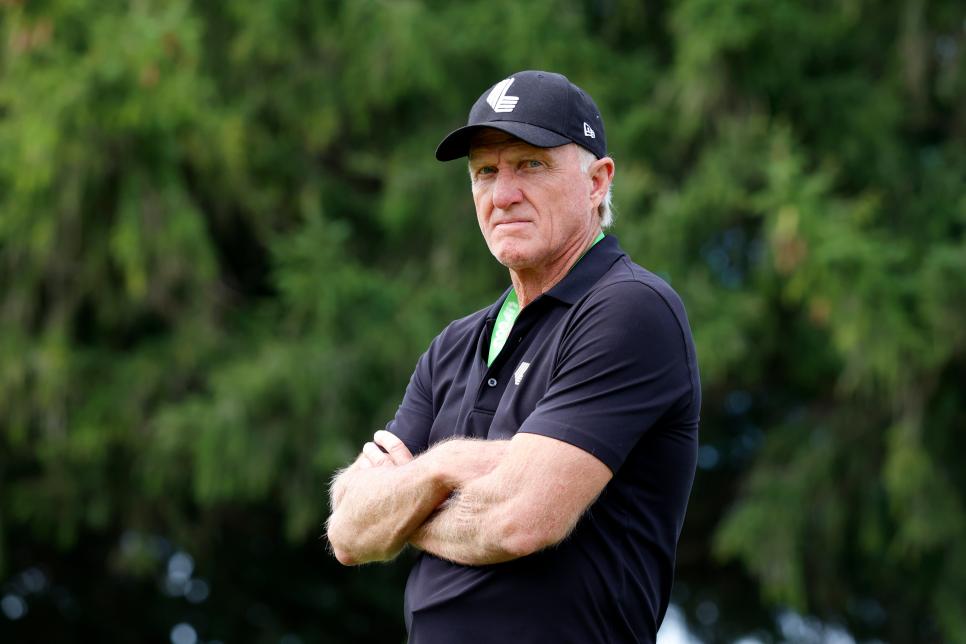
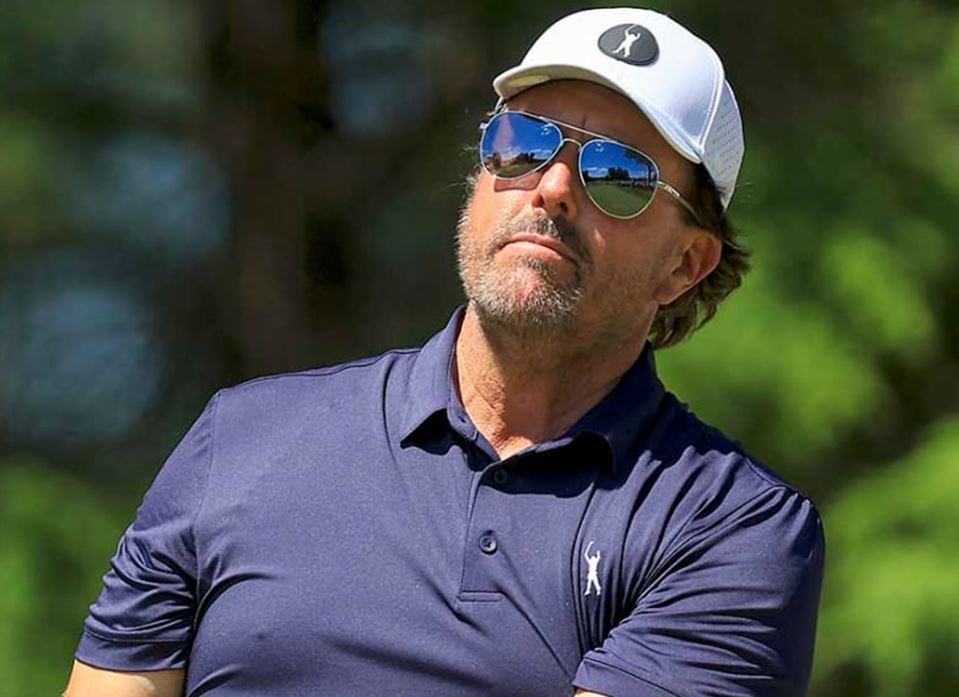


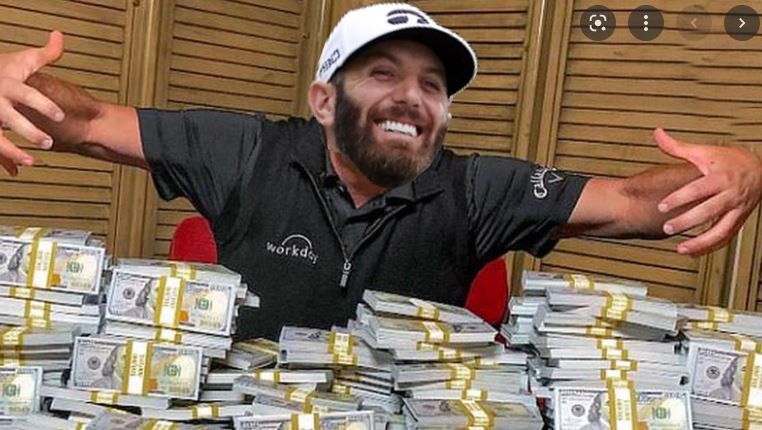
Is this your idea of what’s best for the game?
Good for you, it’s not mine.
The Head Nut
#0001